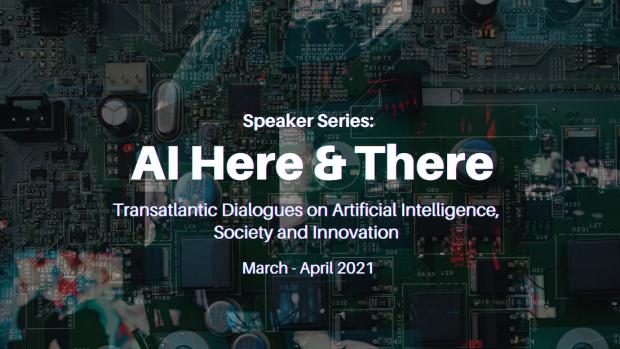AI and sustainability: What’s the connection?
The second event in the artificial intelligence series looks at how AI can save the planet

“AI Here and There: Transatlantic Dialogues on Artificial Intelligence, Society and Innovation” is a four-part series jointly organized by the Center for Responsible AI and the Consulate General of Switzerland in New York. The second event in the series asked if AI could be a useful tool for saving the planet.
The discussion was moderated by Mona Sloane — who in addition to being a senior research scientist at the Center is an adjunct professor in the Department of Technology, Culture and Society at NYU Tandon and a fellow at the NYU Institute for Public Knowledge — and she pointed out that there are no simple answers to that question.
While we generally think of AI technology as carbon neutral, it really isn’t, she warned. She cited a 2019 study in which researchers measured the energy required to train a single large Natural Language Processing model and estimated that it had a carbon footprint equivalent to that of 25 roundtrip flights between Beijing and NYC. And what of the resources involved in building AI infrastructure — obtaining silicon requires mining, after all, and electronics are often not easily recycled.All this is to say that AI is not a magically trouble-free, totally green technology, as one might hope. Luckily, Sloane says, it can also play some part in helping mitigate our current climate change emergency.
The expert panelists she assembled weighed in on the challenges and potential of AI to save the planet — and whether that was even the correct phrase to use. If you missed it, the entire discussion (as well as the first in the series) can be viewed on YouTube, and in the meantime, you can read a few major take-aways below.
Venkatramani Balaji
Head of the Modeling Systems Division at Princeton University’s Cooperative Institute on Modeling the Earth System (CIMES), Associate Faculty the Princeton Institute for Computational Science and Engineering (PICSciE) and the High Meadows Environmental Institute (HMEI)
Balaji asserts it’s not really accurate to talk about saving the Earth. The Earth is going to be just fine, he says. It’ll be orbiting the sun long after humans are gone. We’re the ones who need saving, and AI simulation is going to be key to figuring out the ways to do that, since for obvious reasons we can’t run clinical trials with the only planet we’ve got.
Carrol Plummer
Co-Founder and CEO of Vivent
Vivent is using AI to analyze and interpret complex plant signals at the cellular level — the ones that determine how a plant grows, defends against disease and more.
When you can look at biology through an information-theory lens, you have the opportunity to improve entire biomes, she says, and with half the world’s land being used for agricultural purposes, the improvements in crop yield, earlier treatment for plant diseases, and lessened need for toxic pesticides could be enormously significant.
Eric Nost
Assistant Professor in Geography, Environment and Geomatics at University of Guelph
Nost sees great potential in AI when applied to environmental data. Some of the possible benefits include better land mapping, more efficient forestry management, more robust population surveys in areas where census data is hard to come by, and more. He points to the nonprofit Chesapeake Conservancy’s use of AI in their data-driven conservation efforts. (For example, they’re employing AI to identify the land cover type of every square meter of the Chesapeake Bay and developing machine learning algorithms to detect a forest, shrub, or a tree with very high accuracy.)
He cautions, however, that AI is only as good as we are: if we use it to make oil and gas operations more efficient, we’re still, in the end, using oil and gas.
Fernando Perez-Cruz
Adjunct Professor at the Department of Computer Science of ETH Zurich and Chief Data Scientist at the Swiss Data Science Center (SDSC)
Perez-Cruz, like Nost, stresses that AI is only as good as the people harnessing its power; it can't, for example, generate hypotheses on its own or extrapolate into the future. Its greatest potential may be, he predicts, in helping climate scientists optimize the solutions they’re already coming up with, such as EV batteries.
It’s not too late to register for the next events in the series:
- AI and the future of healthcare? April 20, 2021, 12-1 pm
- Will AI define the next art movement and what it means for human creativity? April, 27, 2021, 12-1 pm
For more details, visit AI Here & There.
You can also read more about another new event series Sloane is convening, “Co-Opting AI: Public Conversations About Design, Inequality, and Technology.”





